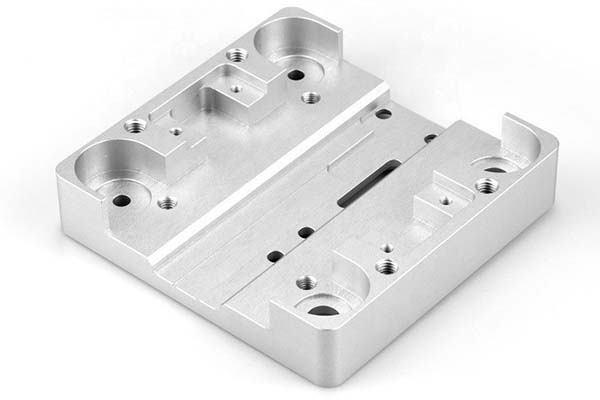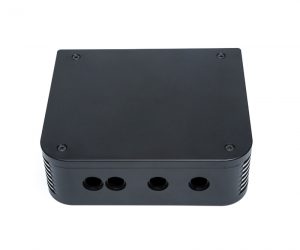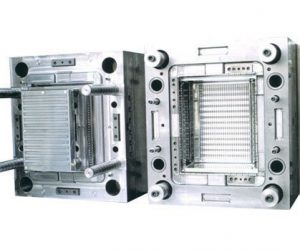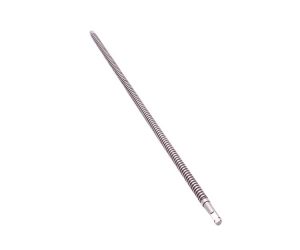Introduction to Die Stamping
Die stamping is a crucial manufacturing process that utilizes precision-machined tools, known as dies, to shape and form metal sheets into desired shapes and sizes. This technique is highly efficient and cost-effective, making it ideal for producing large volumes of metal parts with high accuracy and repeatability. Die stamping can create a wide range of components, from simple flat washers to complex three-dimensional shapes, and is widely used across various industries, including automotive, aerospace, electronics, and consumer products. Its versatility and precision make it a cornerstone of modern manufacturing.
Types of Die Stamping Processes
Blanking and Piercing
Blanking and piercing are fundamental operations in die stamping. Blanking involves cutting a specific shape from a metal sheet to create a blank, which is then further processed into the final part. Piercing, on the other hand, involves creating holes or openings in the metal sheet. These processes are essential for producing simple components such as washers, brackets, and other basic parts.
Drawing and Embossing
Drawing involves stretching the metal sheet over a die to form a hollow part, such as a cup or can. This process requires precise control to prevent tearing or deformation of the metal. Embossing, meanwhile, creates raised or recessed designs on the metal surface, often used for decorative purposes or to add functional features such as logos or text. Drawing and embossing are commonly used in the production of automotive body panels, fuel tanks, and electronic enclosures.
Coining and Forming
Coining involves compressing the metal to create detailed, high-relief designs. This process is often used to produce intricate patterns or to flatten and smooth the metal surface. Forming, on the other hand, involves bending or shaping the metal without significantly changing its thickness. Coining and forming are essential for creating components that require precise detailing and functional features, such as electronic connectors and medical device components.
Progressive Die Stamping
Progressive die stamping is a highly efficient process that uses a series of dies to create complex parts in a single, continuous operation. Each die performs a specific operation, such as cutting, bending, or forming, as the metal strip progresses through the press. This method is ideal for high-volume production runs, as it reduces production time and ensures consistent quality.
Design and Manufacturing of Dies
Die Materials and Heat Treatment
The choice of material for dies is critical, as it directly impacts the tool's durability, strength, and wear resistance. Common materials include:
- Tool Aço: Known for its high strength and wear resistance, making it ideal for dies.
- High-Speed Aço (HSS): Offers excellent cutting performance and is commonly used for punches.
- Tungsten Carbide: Provides superior wear resistance and is used for high-precision tooling components.
Heat treatment processes, such as hardening and tempering, are often applied to enhance the material's properties and extend tool life.
Die Geometry and Tool Design
The geometry and dimensions of the die are meticulously designed to match the desired part specifications. Advanced CAD/CAM software is used to create detailed 3D models and simulations, ensuring that the die accurately reflects the intended design. Key considerations include:
- Tolerance and Precision: Ensuring that the die meets tight tolerances to produce high-quality parts.
- Clearances and Gaps: Properly designed clearances between dies and punches to prevent material deformation and ensure smooth operation.
Wear Resistance and Tool Life
Tooling components are designed to withstand the repetitive stresses of the stamping process. Wear-resistant materials and coatings, such as titanium nitride (TiN), are often used to extend tool life and reduce maintenance requirements. Regular inspection and maintenance are also essential to ensure optimal performance and longevity.
Applications of Die Stamping
Automotive Industry
The automotive industry relies heavily on die stamping for the production of various components, including:
- Engine Parts: Such as pistons, connecting rods, and cylinder heads.
- Body Panels: Including doors, hoods, and fenders.
- Transmission Components: Such as gears and housings.
- Safety Systems: Including brake components and airbag housings.
High-precision die stamping ensures that these parts meet stringent quality standards, contributing to vehicle safety and performance.
Aerospace and Defense
Aerospace and defense sectors demand components with high strength, low weight, and excellent corrosion resistance. Die stamping is used to produce critical parts such as:
- Aircraft Structural Components: Including wing spars, fuselage frames, and landing gear parts.
- Engine Parts: Such as turbine blades and combustion chamber components.
- Avionics Housings: For protecting sensitive electronic systems.
These parts must meet stringent industry standards to ensure the safety and performance of aircraft and defense systems.
Electronics and Telecommunications
In the electronics and telecommunications industries, die stamping creates components that are both lightweight and durable. Common applications include:
- Caixas electrónicas:,Tais como caixas para smartphones, computadores portáteis e outros dispositivos.,Dissipadores de calor:,Para gerir o desempenho térmico em dispositivos electrónicos.,Telecomunicações:,Incluindo componentes para infra-estruturas 5G e dispositivos de rede.,O alumínio e o aço inoxidável são normalmente utilizados devido à sua excelente condutividade térmica e resistência à corrosão.,Dispositivos e equipamentos médicos:,A indústria médica depende da estampagem de metal para componentes utilizados em dispositivos e equipamentos que salvam vidas. As aplicações mais comuns incluem: Instrumentos cirúrgicos, tais como bisturis, pinças e pinças; Implantes, incluindo implantes ortopédicos e componentes dentários; Equipamentos de diagnóstico, tais como componentes para máquinas de ressonância magnética e equipamentos de raios X; Aço inoxidável e aço inoxidável são frequentemente utilizados devido à sua biocompatibilidade, durabilidade e resistência à corrosão. O processo pode ser aumentado ou reduzido para satisfazer as necessidades de produção, desde pequenas séries de lotes até à produção de grandes volumes. O software CAD/CAM avançado e as ferramentas de simulação permitem que os designers optimizem a geometria das peças, reduzindo a utilização de material e melhorando a eficiência da produção.,Escolhas de materiais e acabamentos,Os fabricantes podem escolher entre uma vasta gama de materiais, cada um com propriedades únicas adequadas a diferentes aplicações. Além disso, podem ser aplicados vários acabamentos de superfície, tais como chapeamento, revestimento e tratamento térmico, para melhorar o desempenho, a durabilidade e o aspeto da peça.,Produção de pequenas séries e protótipos,A estampagem de metais não se limita à produção de grandes volumes. Também pode ser utilizada para pequenas séries e produção, permitindo aos fabricantes testar e aperfeiçoar projectos antes de se comprometerem com a produção em grande escala. Esta flexibilidade torna a estampagem de metal uma escolha ideal para startups e empresas que desenvolvem novos produtos.,FAQ,1. Quais são as principais vantagens da estampagem de metal?,A estampagem de metal oferece várias vantagens, incluindo alta eficiência, precisão e eficácia. Pode produzir grandes volumes de peças com qualidade consistente e tolerâncias apertadas. Além disso, a estampagem de metal oferece flexibilidade de design e a capacidade de trabalhar com uma ampla gama de materiais. 2. Que indústrias utilizam normalmente a estampagem de metais?,A estampagem de metais é amplamente utilizada nas indústrias automóvel, aeroespacial, eletrónica, de telecomunicações e médica. Estes sectores exigem componentes duráveis, resistentes e fiáveis que cumpram rigorosos padrões de qualidade.,3. Que tipos de materiais são utilizados na estampagem de metais?,Os materiais comuns utilizados na estampagem de metais incluem o aço, o alumínio, o latão e o aço inoxidável. Cada material oferece propriedades únicas adequadas a diferentes aplicações, assegurando que os fabricantes podem escolher a melhor opção para as suas necessidades específicas.,A estampagem de metais é um processo de fabrico versátil que envolve a utilização de matrizes e punções para moldar e formar chapas metálicas nas formas e tamanhos desejados. Esta tecnologia Such as cases for smartphones, laptops, and other devices.
- Heat Sinks: For managing thermal performance in electronic devices.
- Telecommunications Equipamento: Including components for 5G infrastructure and networking devices.
High-precision die stamping ensures that these components meet tight tolerances and functional requirements.
Consumer Products and Appliances
Die stamping is also widely used in the production of consumer products and appliances. Common applications include:
- Appliance Panels: Such as control panels and decorative covers.
- Hardware Components: Including screws, nuts, and brackets.
- Household Items: Such as kitchenware and tools.
The ability to produce large volumes of parts with consistent quality makes die stamping an ideal choice for consumer goods manufacturing.
Conclusion and Future Trends in Die Stamping
Die stamping is a versatile and essential manufacturing process that delivers high-quality, precise, and cost-effective metal components. Its ability to produce large volumes of parts with consistent quality and tight tolerances makes it a preferred choice across various industries. As technology continues to advance, die stamping is poised to benefit from innovations in materials science, precision machining, and automation. These advancements will enhance efficiency, reduce lead times, and improve the overall quality of stamped components, solidifying the importance of die stamping in modern manufacturing.
FAQ
1. What is the primary advantage of die stamping in manufacturing?
Die stamping offers high efficiency, cost-effectiveness, and the ability to produce large volumes of parts with high accuracy and repeatability. It is ideal for creating complex shapes and tight tolerances, ensuring consistent quality.
2. Which industries commonly use die stamping?
Die stamping is widely used in the automotive, aerospace, electronics, telecommunications, and consumer products industries. These sectors demand durable, precise, and reliable components that meet stringent quality standards.
3. How does die stamping ensure high precision and repeatability?
Die stamping achieves high precision and repeatability through the use of custom-designed dies, advanced machining techniques, and rigorous quality control processes. The dies define the exact geometry of the part, while advanced machinery ensures precise force application and positioning. Regular maintenance and inspection of tooling also ensure consistent performance.



